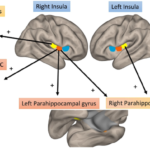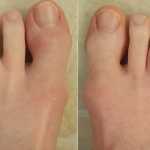Other Initial Treatments
Dr. Coates noted that initial treatment in patients without axial disease need not rely solely on newer, more expensive therapies. Conventional DMARDs, such as methotrexate, leflunomide and sulfasalazine, can be effective in peripheral involvement in PsA.
In the SEAM-PSA clinical trial, methotrexate monotherapy at a dose of 20 mg weekly demonstrated modest efficacy in patients with PsA. However, methotrexate monotherapy was also shown to be significantly less effective than etanercept monotherapy or combination therapy with etanercept and methotrexate.5
In the COMPLETE-PSA clinical trial, combination therapy with methotrexate and leflunomide was found to be more effective than methotrexate alone for PsA. But it was associated with a higher incidence of mild adverse events, such as gastrointestinal symptoms and elevated liver enzymes.6
Also, sulfasalazine demonstrates modest efficacy in the treatment of patients with PsA but is generally less effective than methotrexate monotherapy and combination therapy with methotrexate and leflunomide.7
Treatment Considerations
Dr. Coates provided a helpful summary of considerations for clinicians regarding biologic therapies in patients with PsA.
Often, TNF-α inhibitors are selected as first-line biologic therapy for patients with PsA because we have the most data on these agents, they work for all six domains of disease (i.e., peripheral arthritis, axial disease, enthesitis, dactylitis, skin psoriasis and nail involvement) and they are good at treating symptoms of moderate to severe skin disease. Also, several agents within this class have efficacy for uveitis and inflammatory bowel disease.
The benefits of IL-12/23 inhibitors for patients with PsA include efficacy for skin involvement, applicability for inflammatory bowel disease and less frequent injections. However, these agents do not have evidence that supports their use when a patient has axial involvement.
IL-17 inhibitors are effective for all six domains of disease and—unlike TNF-α inhibitors—can be used in patients with demyelinating diseases, such as multiple sclerosis. However, they should be avoided in patients with inflammatory bowel disease.
IL-23 inhibitors are good for managing severe disease and tend to have a long-lasting, durable treatment response, but have—so far—not been indicated for axial involvement.
Finally, Dr. Coates noted that JAK inhibitors have the benefit of being orally administered, effective for all six domains of disease and can be used in patients with inflammatory bowel disease. However, safety concerns exist regarding the potential of JAK inhibitors to increase the risk of cancer, major adverse cardiovascular events and thrombosis in patients.



